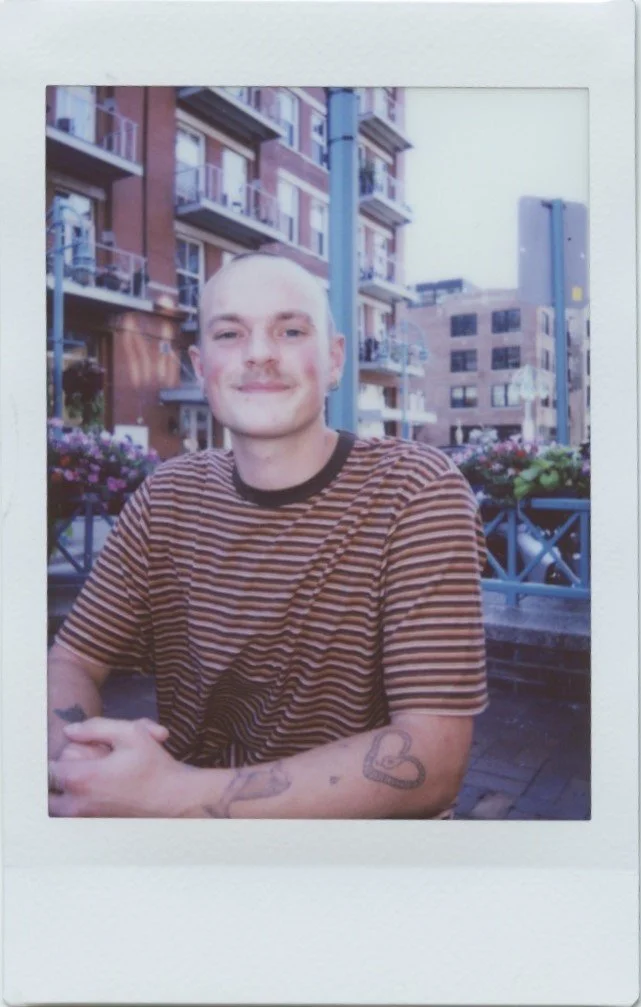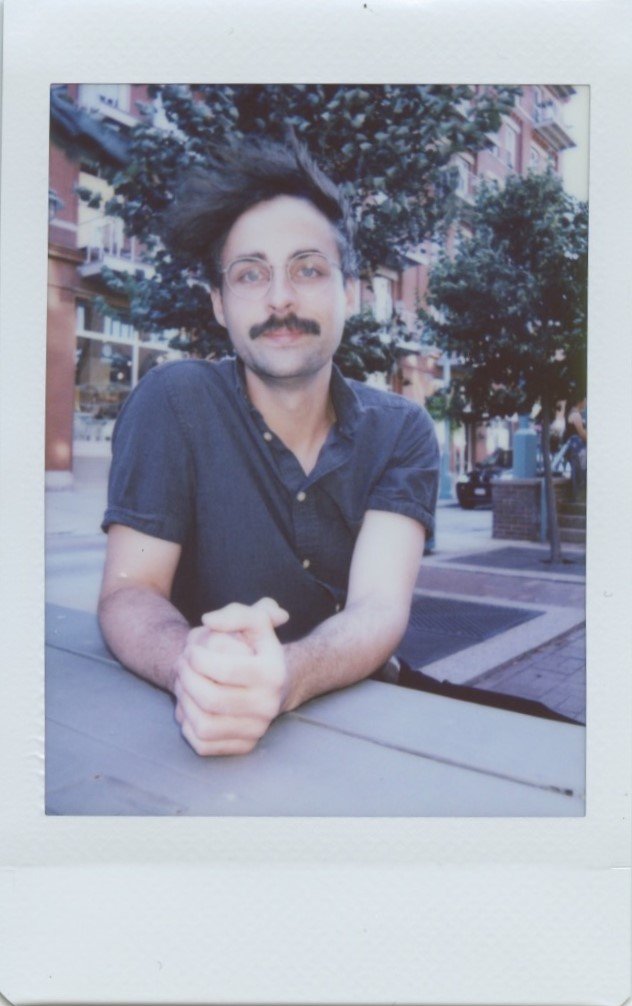-
Carter Voras’s work is heavily influenced by the modern Expressionist style as well as contemporary painters like Francis Bacon, Cecily Brown and Julie Mehretu. The paintings they produce are deeply physical, employing gestural and often aggressive brushstrokes and an intentionally limited and vibrant color palette to convey intense or shameful memories and emotions most simply. Their work is often self-referential or playful and naive, nodding to the self-destructive nature of meme and internet culture. In one of their paintings, The Wrestle, an older and younger figure engage in a bloody fistfight while a crowd looks on. All figures being modeled after Voras’s own body, this work asks if the artist is the victim of their own actions or the onlooker egging on the conflict, mocking the internal struggle.
- Carter Voras (they/him)
-
I am enticed by the possibility of a limitless structure—an object changing state, becoming flexible, disappearing and then returning. These properties formally align with a general understanding of magic, both in secular and spiritual forms. In many ways I have found these concepts to surface in queerness as well. My practice considers this affinity to magic as a queered perspective. I work with images and objects of archaic forms of queer magic, true magic embedded in natural phenomena. It feels right that much of my work manifests as images. Photography in its construction defines the possibility of limitless structure. It is manipulated light fractured in both time and space. Within the last ten years I have fixated on a deeply personal, romantic desire for the Sun. Photographs made during this time are transformed by light in its complicated nature, embodying both love and play.
- Grant Gill (he/him)
















